Rafael Berkvens
Cross-layer Integrated Sensing and Communication: A Joint Industrial and Academic Perspective
May 16, 2025Abstract:Integrated sensing and communication (ISAC) enables radio systems to simultaneously sense and communicate with their environment. This paper, developed within the Hexa-X-II project funded by the European Union, presents a comprehensive cross-layer vision for ISAC in 6G networks, integrating insights from physical-layer design, hardware architectures, AI-driven intelligence, and protocol-level innovations. We begin by revisiting the foundational principles of ISAC, highlighting synergies and trade-offs between sensing and communication across different integration levels. Enabling technologies, such as multiband operation, massive and distributed MIMO, non-terrestrial networks, reconfigurable intelligent surfaces, and machine learning, are analyzed in conjunction with hardware considerations including waveform design, synchronization, and full-duplex operation. To bridge implementation and system-level evaluation, we introduce a quantitative cross-layer framework linking design parameters to key performance and value indicators. By synthesizing perspectives from both academia and industry, this paper outlines how deeply integrated ISAC can transform 6G into a programmable and context-aware platform supporting applications from reliable wireless access to autonomous mobility and digital twinning.
Joint Communication and Sensing for 6G -- A Cross-Layer Perspective
Feb 14, 2024
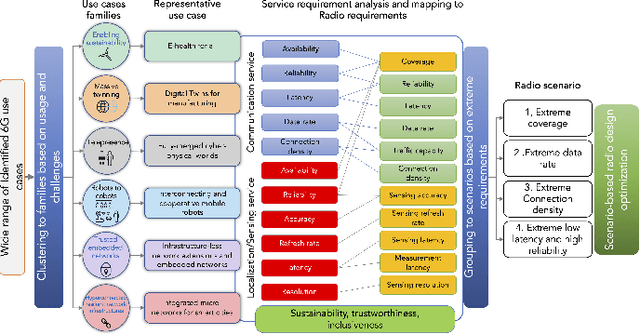
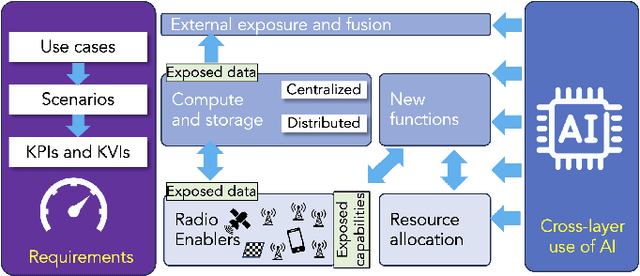
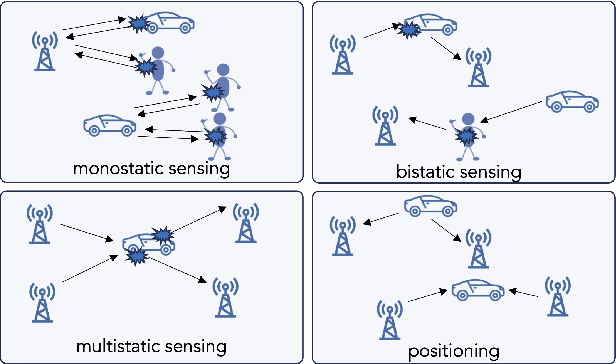
Abstract:As 6G emerges, cellular systems are envisioned to integrate sensing with communication capabilities, leading to multi-faceted communication and sensing (JCAS). This paper presents a comprehensive cross-layer overview of the Hexa-X-II project's endeavors in JCAS, aligning 6G use cases with service requirements and pinpointing distinct scenarios that bridge communication and sensing. This work relates to these scenarios through the lens of the cross-layer physical and networking domains, covering models, deployments, resource allocation, storage challenges, computational constraints, interfaces, and innovative functions.
Toward Energy Efficient Multiuser IRS-Assisted URLLC Systems: A Novel Rank Relaxation Method
Sep 26, 2023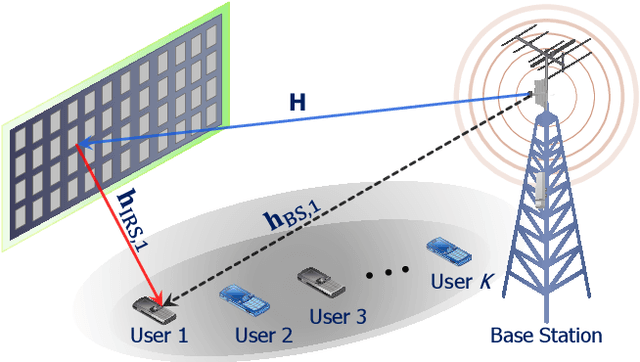
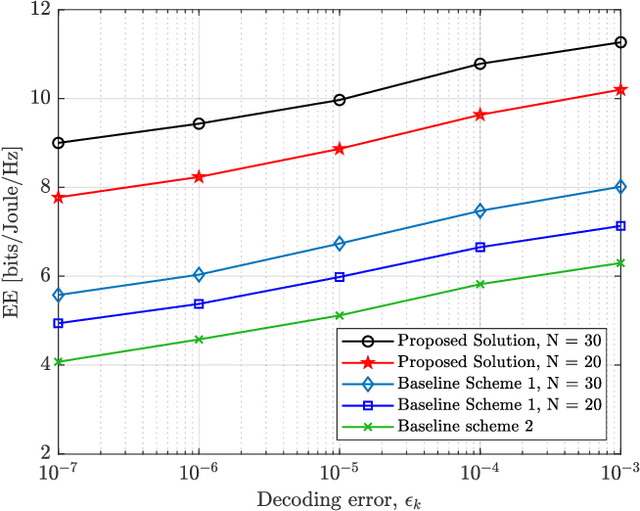
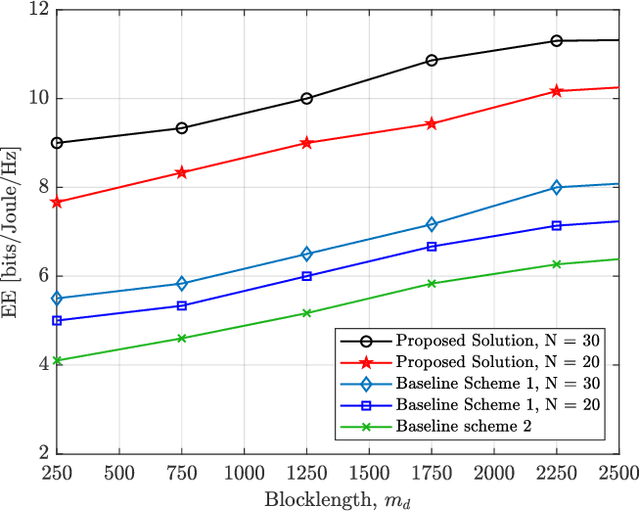
Abstract:This paper proposes an energy efficient resource allocation design algorithm for an intelligent reflecting surface (IRS)-assisted downlink ultra-reliable low-latency communication (URLLC) network. This setup features a multi-antenna base station (BS) transmitting data traffic to a group of URLLC users with short packet lengths. We maximize the total network's energy efficiency (EE) through the optimization of active beamformers at the BS and passive beamformers (a.k.a. phase shifts) at the IRS. The main non-convex problem is divided into two sub-problems. An alternating optimization (AO) approach is then used to solve the problem. Through the use of the successive convex approximation (SCA) with a novel iterative rank relaxation method, we construct a concave-convex objective function for each sub-problem. The first sub-problem is a fractional program that is solved using the Dinkelbach method and a penalty-based approach. The second sub-problem is then solved based on semi-definite programming (SDP) and the penalty-based approach. The iterative solution gradually approaches the rank-one for both the active beamforming and unit modulus IRS phase-shift sub-problems. Our results demonstrate the efficacy of the proposed solution compared to existing benchmarks.
On the Energy Efficiency of THz-NOMA enhanced UAV Cooperative Network with SWIPT
Sep 25, 2023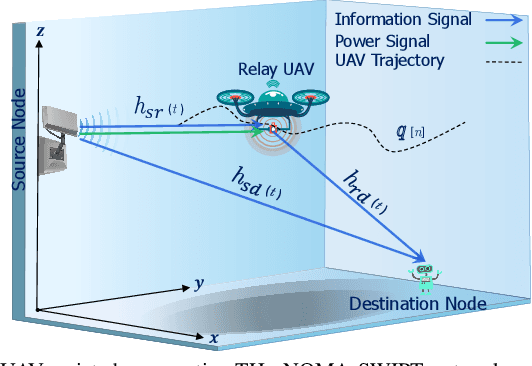
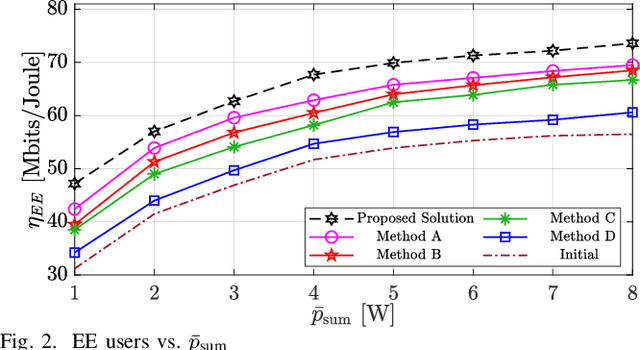
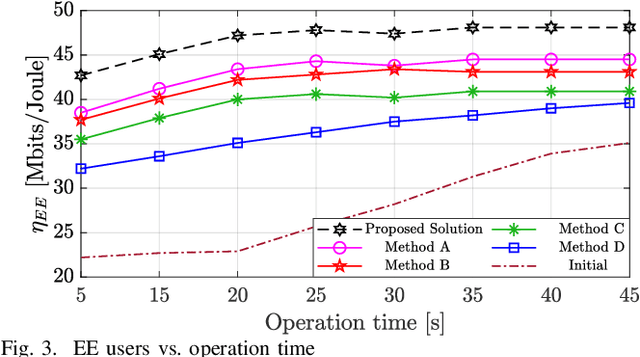
Abstract:This paper considers the energy efficiency (EE) maximization of a simultaneous wireless information and power transfer (SWIPT)-assisted unmanned aerial vehicles (UAV) cooperative network operating at TeraHertz (THz) frequencies. The source performs SWIPT enabling the UAV to receive both power and information while also transmitting the information to a designated destination node. Subsequently, the UAV utilizes the harvested energy to relay the data to the intended destination node effectively. Specifically, we maximize EE by optimizing the non-orthogonal multiple access (NOMA) power allocation coefficients, SWIPT power splitting (PS) ratio, and UAV trajectory. The main problem is broken down into a two-stage optimization problem and solved using an alternating optimization approach. In the first stage, optimization of the PS ratio and trajectory is performed by employing successive convex approximation using a lower bound on the exponential factor in the THz channel model. In the second phase, the NOMA power coefficients are optimized using a quadratic transform approach. Numerical results demonstrate the effectiveness of our proposed resource allocation algorithm compared to the baselines where there is no trajectory optimization or no NOMA power or PS optimization.
Gesture Recognition with mmWave Wi-Fi Access Points: Lessons Learned
Jun 29, 2023



Abstract:In recent years, channel state information (CSI) at sub-6 GHz has been widely exploited for Wi-Fi sensing, particularly for activity and gesture recognition. In this work, we instead explore mmWave (60 GHz) Wi-Fi signals for gesture recognition/pose estimation. Our focus is on the mmWave Wi-Fi signals so that they can be used not only for high data rate communication but also for improved sensing e.g., for extended reality (XR) applications. For this reason, we extract spatial beam signal-to-noise ratios (SNRs) from the periodic beam training employed by IEEE 802.11ad devices. We consider a set of 10 gestures/poses motivated by XR applications. We conduct experiments in two environments and with three people.As a comparison, we also collect CSI from IEEE 802.11ac devices. To extract features from the CSI and the beam SNR, we leverage a deep neural network (DNN). The DNN classifier achieves promising results on the beam SNR task with state-of-the-art 96.7% accuracy in a single environment, even with a limited dataset. We also investigate the robustness of the beam SNR against CSI across different environments. Our experiments reveal that features from the CSI generalize without additional re-training, while those from beam SNRs do not. Therefore, re-training is required in the latter case.
 Add to Chrome
Add to Chrome Add to Firefox
Add to Firefox Add to Edge
Add to Edge